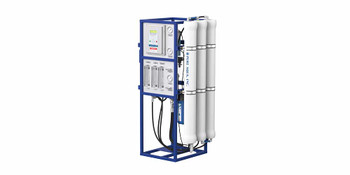All Information About Reverse Osmosis
Posted by Pure Aqua, Inc. on Oct 5th 2020
If you are looking for the best bottled-quality water you can achieve, you should be looking for (RO) reverse osmosis system. Reverse osmosis (commonly called RO) is the best in water filtration systems. It not only provides clean and safe drinking water that good for so many applications, but it also saves money by eliminating the high cost of bottled water.
Reverse osmosis is an often used process to remove dissolved constituents from water. It is most effective in removing inorganic salts, particularly sodium chloride. Currently it is accepted as the most effective and economical way of desalting naturally occurring seawater with sodium chloride levels up to 48,000 ppm.
The technology of desalting seawater using reverse osmosis became commercially available in the early 1980’s. At that time, the technology often required 2 “passes” using reverse osmosis to consistently achieve a product quality of less than 500 ppm TDS. In many countries, 500 ppm TDS is the maximum acceptable TDS level in potable water. By the 1990’s, the major membrane manufacturers were producing seawater membrane elements capable of producing product water with TDS levels of less than 500 ppm with 1 pass.
Since the time that salt rejection by reverse osmosis was optimized at more than 99%, improvements have often focused on using less energy to produce product water. On the membrane side, membrane elements are now capable of producing product water using approximately 65-70% of the applied pressure originally required. On the equipment side, devices are now available to capture energy from reverse osmosis reject streams and use what’s captured to boost pressure in system pumps. This recovery of previously lost energy means less pump motor HP is required in systems.
Other fairly recent developments and improvements include reducing the footprints of systems by manufacturing larger diameter elements, and using thicker feed spacers in membrane elements to lessen fouling and make cleanings more effective. For a period, feed spacers had grown more narrow as a means of making more room for additional membrane area in elements. For the time being, using feed spacers of less than 30 mil thickness is not advised with feed waters likely to foul and require membrane cleaning.
 ENGLISH
ENGLISH ESPAÑOL
ESPAÑOL العربية
العربية PORTUGUÉS
PORTUGUÉS FRANÇAIS
FRANÇAIS

